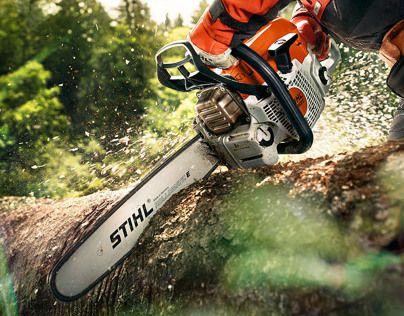Chainsaws are incredibly powerful and efficient tools, but their power comes with significant risks. For beginners, understanding and implementing proper safety procedures is not just recommended, it’s absolutely critical. This guide will walk you through the essential steps and considerations to ensure you can operate a chainsaw as safely as possible, minimizing the risk of accidents and injuries. Remember, no task is worth compromising your safety.
Essential Safety Gear
Before you even think about starting a chainsaw, you must equip yourself with the right personal protective equipment (PPE). This gear acts as your first line of defense against the inherent dangers of chainsaw operation.
- Head Protection: A hard hat or a chainsaw helmet system (which often includes ear and eye protection) is crucial to protect against falling branches or kickback.
- Eye Protection: Safety glasses or a face shield are non-negotiable to guard against wood chips, sawdust, and debris.
- Hearing Protection: Chainsaws are extremely loud. Earplugs or earmuffs are essential to prevent permanent hearing damage.
- Chainsaw Chaps: These are specially designed trousers or leg coverings made with protective fibers that can stop a moving chain. They are vital for protecting your legs from cuts.
- Gloves: Heavy-duty work gloves provide grip, reduce vibration, and protect your hands from splinters and minor cuts.
- Foot Protection: Steel-toed boots with good ankle support are necessary to protect your feet from falling objects and the chainsaw itself.
Pre-Operation Checks
Before each use, a thorough inspection of your chainsaw is vital to ensure it’s in good working order and safe to operate.
- Chain Condition: Check the chain for sharpness, proper tension, and any damage. A dull chain is more prone to kickback and makes the saw work harder.
- Bar and Sprocket: Inspect the guide bar for wear and ensure the sprocket tip is free-spinning.
- Fuel and Oil Levels: For gas saws, ensure you have the correct fuel mix and that the bar oil reservoir is full. For electric/battery saws, check battery charge or cord condition.
- Controls: Verify that the chain brake, throttle trigger, and all other controls are functioning correctly.
- Cleanliness: Remove any sawdust or debris from the air filter, cooling fins, and around the chain and bar.
Proper Starting and Handling Techniques
Starting a chainsaw correctly and maintaining proper posture are key to safe operation.
- Starting Safely: Always start the chainsaw on a firm, flat surface. For gas saws, engage the chain brake, place your right foot through the rear handle, and hold the front handle firmly with your left hand. Pull the starter cord with your right hand. Never drop-start a chainsaw.
- Firm Grip: Always maintain a firm grip with both hands on the chainsaw handles. Your thumbs should wrap around the handles for maximum control.
- Stance: Stand with your feet shoulder-width apart, maintaining good balance. Keep your body to the left of the cutting line, so if kickback occurs, the saw is less likely to hit you directly.
- Clear Work Area: Ensure your work area is clear of obstacles, people, and pets. Plan your cuts and felling direction if cutting down trees.
Understanding Kickback and How to Avoid It
Kickback is one of the most dangerous chainsaw hazards, occurring when the chain at the upper tip of the guide bar strikes an object or gets pinched, causing the saw to violently kick back towards the operator.
- Avoid the Kickback Zone: The kickback zone is the upper quadrant of the guide bar’s tip. Never cut with this part of the bar.
- Maintain Chain Sharpness: A sharp chain cuts efficiently and reduces the likelihood of binding.
- Proper Technique: Always use a firm grip and proper stance. Be aware of where the bar tip is at all times.
- Avoid Cutting with the Tip: Unless you are an experienced professional performing specific tasks like plunge cuts, avoid using the tip of the bar.
Safe Cutting Practices
- Plan Your Cut: Before making any cut, assess the wood, identify potential pinch points, and plan your cutting strategy.
- Clear Debris: Remove any small branches or debris that could interfere with your cut or cause you to trip.
- Never Cut Above Shoulder Height: This reduces control and increases the risk of kickback or losing balance.
- Watch for Pinching: Be aware of the forces acting on the wood. If the wood is likely to pinch the bar, use a wedge or make relief cuts.
- Felling Trees: This is a highly specialized and dangerous task. If you are a beginner, never attempt to fell a tree without professional training and supervision. Even small trees can cause significant damage or injury.
Conclusion
A chainsaw can be an incredibly useful tool, but its safe operation demands respect, knowledge, and constant vigilance. By investing in the proper safety gear, performing pre-operation checks, mastering safe starting and handling techniques, understanding and avoiding kickback, and adhering to safe cutting practices, beginners can significantly reduce the risks associated with chainsaw use. Always prioritize safety over speed, and when in doubt, consult a professional or seek further training. Your safety is paramount.

